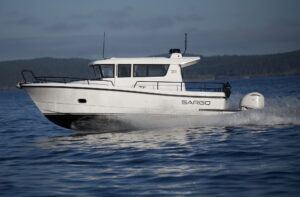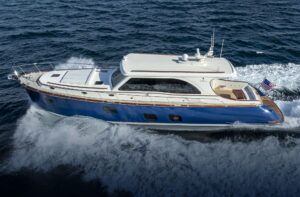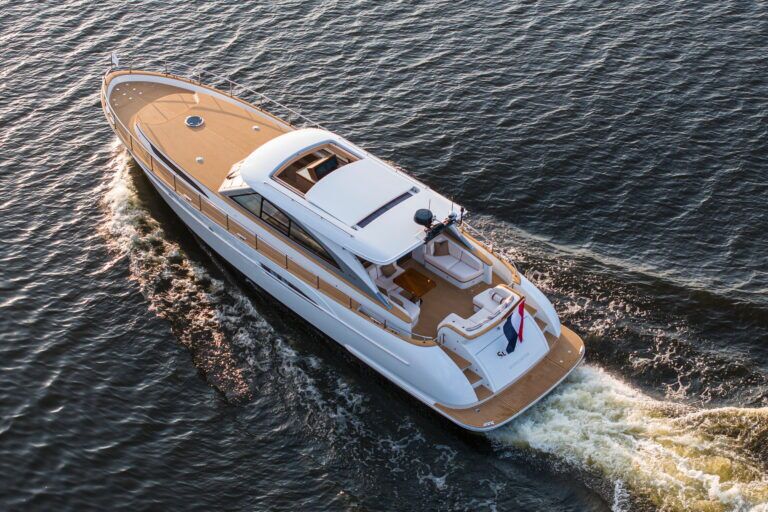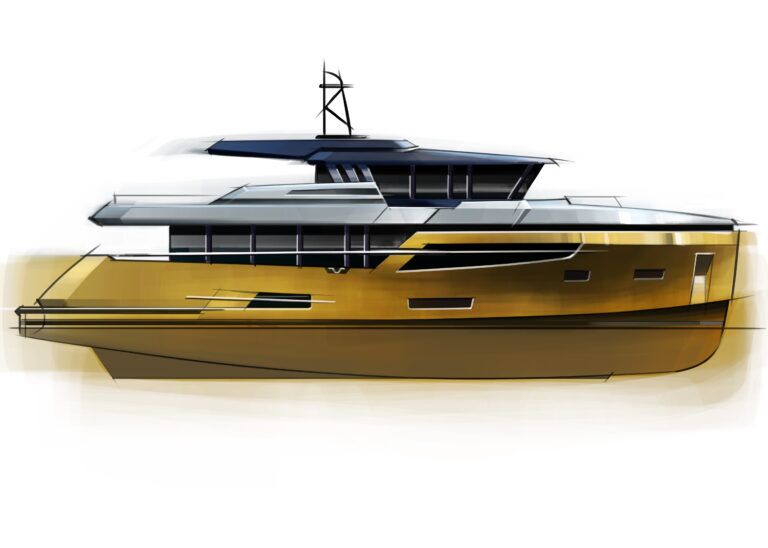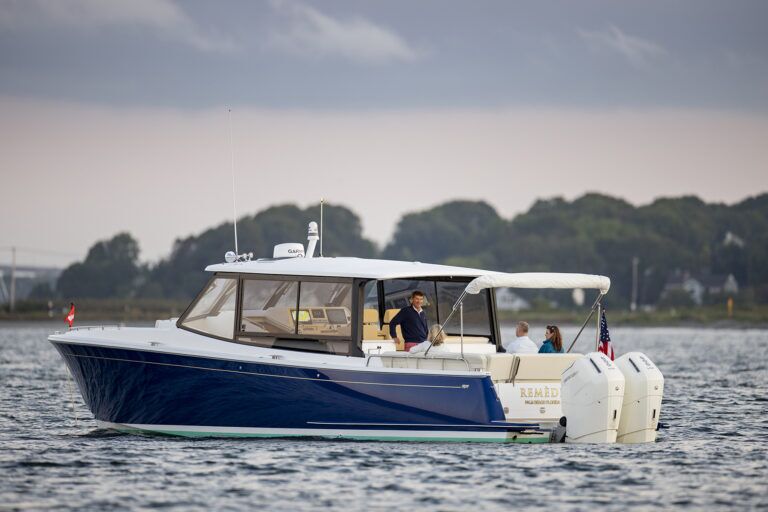My wife, Elisabeth, and I were standing on a dock at the Fort Lauderdale International Boat Show, having just stepped off another brokerage trawler that almost—but not quite—fit the vision in our heads. Elisabeth looked at me and said, “We could make this work.” I nodded, but we both knew what she meant: compromise, again.
That was the moment something clicked. Maybe we didn’t want to make something work. Maybe we wanted to make something ours.
We’d spent months searching. Trawler after trawler, tour after tour. We loved the idea of a classic explorer-style vessel. Something with range, beauty and capability. But every used boat came with baggage. Systems we’d have to redo. Layouts that didn’t fit how we lived. Stories that belonged to someone else.
The more we looked, the more we realized we didn’t want to inherit a boat. We wanted to author one.

Choosing Selene
In 2024, we signed a contract to build a Selene Classic Explorer 60. We knew the delivery wouldn’t be until early 2026, and that worked just fine for us. It wasn’t until later that we realized just how valuable and enjoyable the journey to delivery would be.
Now that our Selene is nearing completion, I can say with confidence that our decision to build our own trawler from the keel up was the right one. And the reasons why go far beyond simply not wanting to compromise.
When you hear that a boat will be in build, you might imagine a lot of waiting around. But this couldn’t be further from the truth. Ever since we signed on the dotted line, it’s been a whirlwind.
First off, we designed the boat our way, including the joy of working with Selene to select the right systems, layouts, finishes and equipment. Then there’s the lifestyle stuff, things like getting the house sold and preparing for life aboard. There has also been tons of learning, with classes on everything from diesel engines and nautical electronics to photography.
The biggest surprise of the build process is the connection Elisabeth and I made with the Selene cruising community. Thanks to our dealer, Pacific Northwest Yachts in Seattle, and thanks to Selene Yachts Americas and their close-knit group of owners, we’ve had no shortage of opportunities to hit the water.
In addition to cruising with owners on both coasts, I joined a sea trial of a Selene Classic in China and helped Selene Technical Director Dylan Hildebrand pilot a beautiful Selene 60 Ocean Explorer from Vancouver Island to San Juan Island in the Pacific Northwest. Elisabeth joined a group of 10 Selenes in the Bahamas for a week.
We’re not just waiting for our boat to be done. We’re already living the dream.
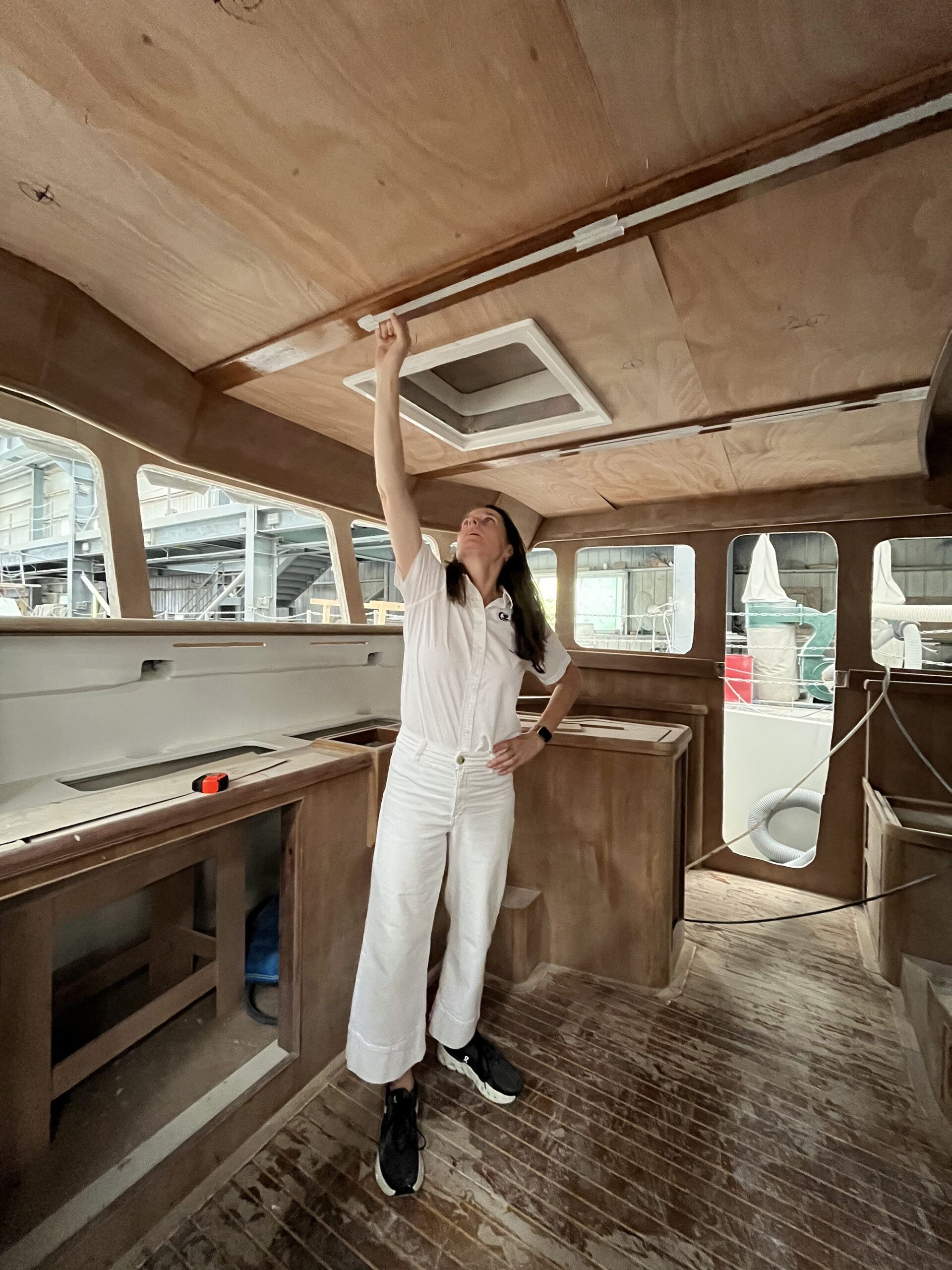
Joy of the Build Process
I’ll never forget the first time I sat across the table from Howard Chen, founder of Selene Yachts. I was walking him through our vision for the interior, which fell somewhere between nautical and Scandinavian, with lots of light and a clean, modern feel.
Howard listened intently. He didn’t say much. Just nodded. I assumed he was taking notes. Then, as I paused, he turned the paper around.
It was a hand-drawn sketch of our future salon, complete with furniture, cabinetry and windows. It was beautiful. From that moment, our dreams were turning this boat into a reality.
Since that first sketch, we’ve done factory visits to China. Met with amazing craftspeople. Discussed features that have never before gone on a Selene 60, like the custom bathtub that Elisabeth dreamed of, and our cabinetry and ceilings built to my actual height. There’s nothing like walking through your own hull for the first time and realizing your passion is coming to fruition.
Along the way, we’ve had great support from Mark Tilden, a seasoned Selene owner who’s built two boats and helps guide others through the process. Mark has been our sounding board, technical interpreter and part-time marriage counselor as we navigated decisions about drawers, doors and diesel day tanks. He also took us out on his Selene and gave us confidence in our ability to cruise as a couple.
Hildebrand, meanwhile, regularly visits the factory to refine systems integration and ensure overall quality. His care and support have made a big difference, not just in our boat, but also in how confident we feel about the process.

Dollars and Sense
In business and in life, I’ve learned that there’s more than meets the eye to every price tag. For example, risk and uncertainty always bring added cost, while trust and confidence bring added value.
Buying a boat is also an emotional investment, one that will hopefully pay huge dividends over the next 15 years as we live out our cruising dream. To make this investment work, Elisabeth and I have already sold our house and made some big lifestyle concessions. For many people in our position, a pre-owned trawler would seem financially sensible.
But I’ve already gone down that route, and I know it comes with costs beyond the price tag. I’ve had three boats, not to mention the experience of spending hundreds of thousands of dollars to get one closer to what I wanted. On a used boat, something is going to come up, and you almost never know when or where.
When I compared the price of a new Selene with the true cost of buying a similar pre-owned model, and then considered the known and unknown upgrades I would need to make, I found that the cost gap was much smaller than I initially thought. And it doesn’t even include the confidence that comes with a new build, or the high resale value for which Selenes are known.

This Boat Is Us
People ask us all the time: “A new boat? Why not just buy one that’s already floating?”
My short answer is always the same: This boat is us.
We made decisions, big and small, that reflect how we want to live and travel. We chose a layout that gives us open space for hosting, and quiet corners for reading. We spec’d electronics, solar systems, batteries, watermakers and even that custom bathtub. Everything is designed for long-range cruising and extended autonomy. We planned the galley around how we cook, and the pilothouse around how we think.
This path stretched us financially, emotionally and logistically. But we’re learners. And at every step, we’ve leaned on people who know more than we do. That’s part of the reward. There’s also a pride of ownership that comes from knowing this boat will launch with our fingerprints on every bulkhead. Not because we installed it, but because we cared enough to be involved.
We named the boat Full Circle. It’s personal. It reflects our own journeys, individually and as a couple. It marks a moment in our lives where everything aligned: love, timing, opportunity and purpose.
And even though Full Circle hasn’t left the factory yet, she is already teaching us about patience, design and the freedom that comes from being intentional with your life. Building a new boat isn’t for everyone, but if you’re like us—if you want to shape something that reflects not just where you want to go, but also who you are—then it might be worth the stretch for you, too.
After all, most adventures start before you ever leave the dock.
This article originally appeared in the November/December 2025 issue of Passagemaker magazine.



